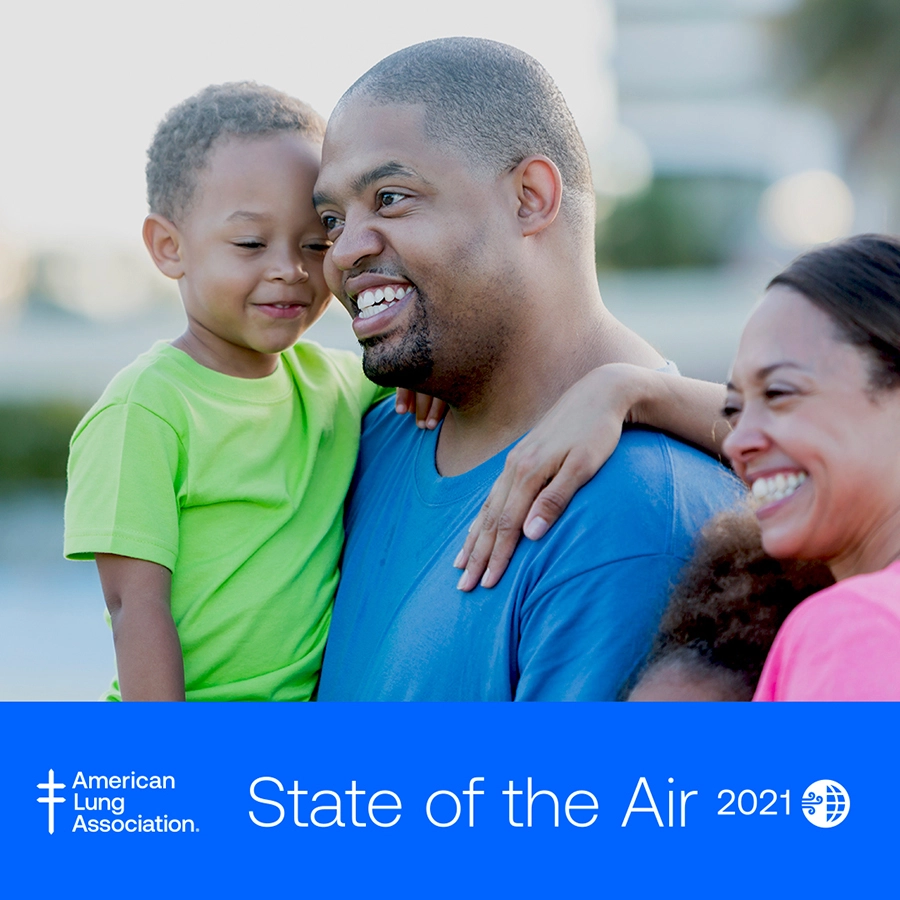The American Lung Association’s annual “State of the Air” report, released on April 21, found that more than 4 in 10 people (135 million) in the U.S. live with polluted air, placing their health and lives at risk. The report also showed that the burden of living with unhealthy air was not shared equally between all Americans. It revealed that people of color were 61% more likely to live in a county with unhealthy air than white people – a clear and urgent issue of environmental inequity.
Each year, “State of the Air” reports on the two most widespread outdoor air pollutants: ground-level ozone pollution and particle pollution. It looks at particle pollution in two different ways – year-round levels and short-term spikes. Exposure to elevated levels of these pollutants is dangerous to public health and can be lethal. The report shows that people of color are three times more likely to live in a county that failed all three air quality grades than white people.
Too many communities are exposed to nearby sources of pollution that harm their health – like power plants, oil and gas operations, major roads and ports. And those communities are disproportionately likely to be communities of color, placing them at higher risk of pollution-related health issues such as asthma-related hospitalizations, heart attacks, strokes and even premature death.
Looking at asthma, we know that asthma disproportionately affects Black and Latino individuals. Exposure to air pollution exacerbates asthma symptoms, and Black and Latino people are among those much more likely to live in areas with higher air pollution.
New research also shows that air pollution exposure can result in worse health outcomes from COVID-19, further increasing the risk to communities of color. As the nation continues to respond to the pandemic and its disproportionate burden on hard-hit communities of color, reducing air pollution is critical.
The disproportionate health burden from air pollution results in an economic burden, too. People living in communities with higher air pollution face more missed days of school and work, as well as the additional financial strain of medical costs associated with more hospitalizations, costly medications, and trips to the emergency room.
While “State of the Air” does find some improvements in the nation’s air quality, it also shows that climate change is making it harder to sustain this progress and is even making air quality worse in many parts of the country. The three years covered by the report ranked among the six hottest years on record globally. Changing climate patterns fuel wildfires, and also drive warmer temperatures that lead to more ground-level ozone pollution. This degraded air quality threatens everyone, with people of color, again, being among those most vulnerable.
The Lung Association will continue to champion the Clean Air Act and push for clean air, health equity and environmental justice for all. You can help! Join us by signing this petition calling on President Biden to promote environmental justice by prioritizing historically burdened communities for pollution cleanup and to make sure they benefit from the transition our nation from fossil fuels and combustion to clean, renewable electricity and zero-emission transportation.
Blog last updated: August 29, 2023



